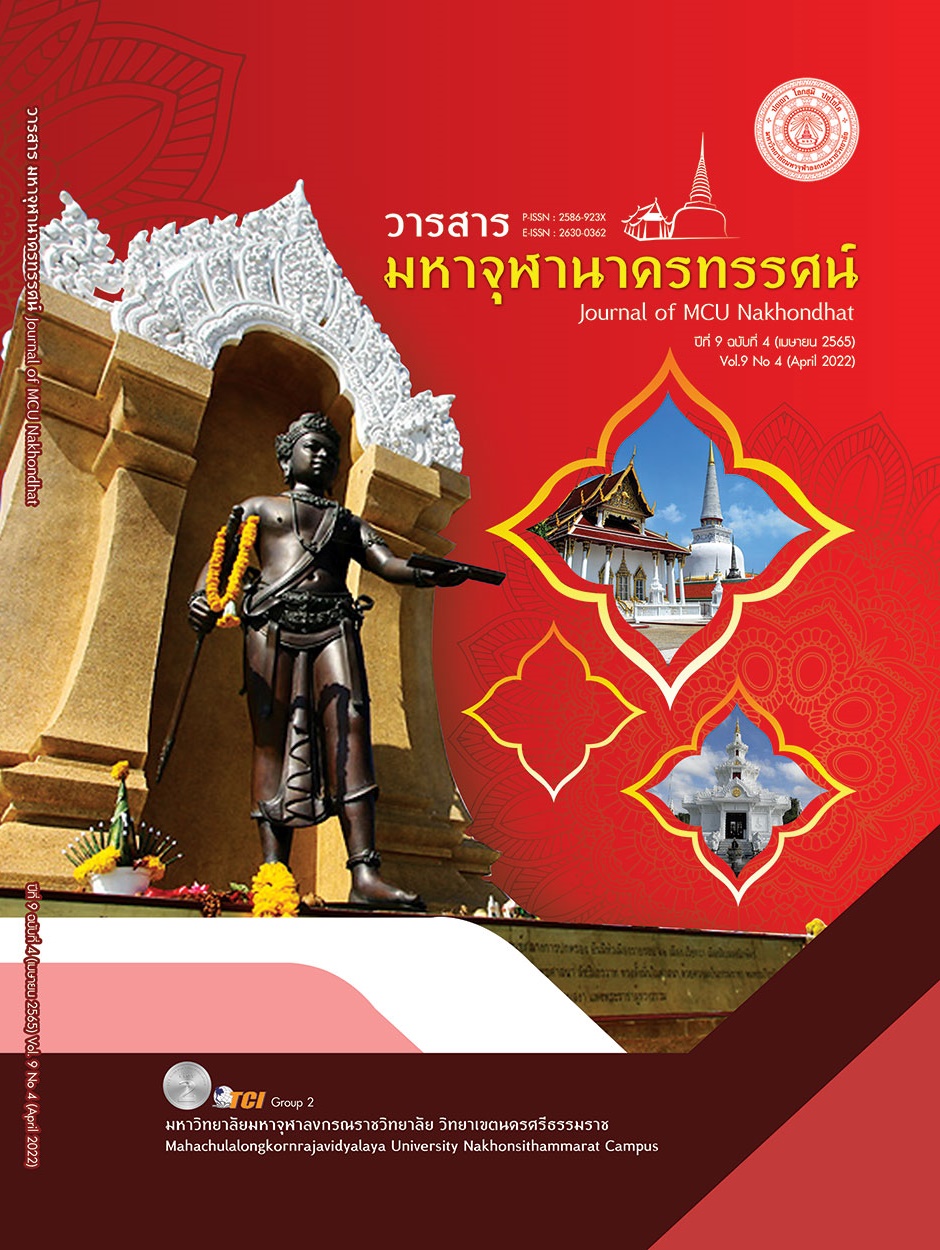THE DEVELOPMENT OF AN ADMINISTRATIVE MANAGEMENT MODEL FOR THE EDITING OF PALM-LEAF MANUSCRIPTS TIPITAKA WRITTEN IN KHOM, BURMESE, SINHALESE AND THAM SCRIPTS
Main Article Content
Abstract
The Objectives of this research article were to an administrative management model for the editing of palm-leaf manuscripts Tipitaka written in Khom, Burmese, Sinhalese and Tham scripts. The qualitative research was conducted using documentary and field research. Content analysis was used to analyze data. Focus group discussion was conducted to confirm the administrative model. The results revealed that the administration of the editing of palm-leaf manuscripts Tipitaka written in Khom, Burmese, Sinhalese and Tham scripts was classified into 6 steps: manuscript survey, manuscript digitization, manuscript selection, canonical text database creation, manuscript editing and distribution. The administrative management model for the editing of palm-leaf manuscripts employed Deming Cycle or PDCA as it is the continuous and endless improvement process of quality work suitable for long-term projects. 1) In the PLAN step, long-term and short-term goals, indicators, criteria and sufficient 8M factors were determined. 8M factors included manpower, money, material, method, mediation, mandate, marketing and morality 2) In the DO step, work procedures, computer programs, specific forms and precautions were implemented. 3) In the CHECK step, results, aims, indicators, and criteria were validated. 4) In the ACT step, the corrective actions were planned for the coming year. Moralities used for administrative management were the Four Noble Truths consisting of Dukkha, Samudaya, Nirodha and Magga and the Four Foundations for Accomplishment consisting of passion, diligence, consciousness and investigation. Morality used for individual performance was the Four Foundations for Accomplishment.
Article Details

This work is licensed under a Creative Commons Attribution-NonCommercial-NoDerivatives 4.0 International License.
References
กองทุนสนทนาธรรมนำสุข ท่านผู้หญิง ม.ล.มณีรัตน์ บุนนาค ในพระสังฆราชูปถัมภ์สมเด็จพระญาณสังวร สมเด็จพระสังฆราช สกลมหาสังฆปริณายก. (2549). บันทึกโครงการพระไตรปิฎกสากล อักษรโรมัน. (พิมพ์ครั้งที่ 1). กรุงเทพมหานคร:
ดิเรก อินจันทร์ และคณะ. (2558). การจัดทำฐานข้อมูลคัมภีร์ใบลานและศึกษาประวัติศาสตร์ชุมชนจากคัมภีร์ใบลานวัดน้ำจำ ตำบลร้องวัวแดง อำเภอสันกำแพง จังหวัดเชียงใหม่. ใน (รายงานผลการวิจัย). เชียงใหม่:สำนักศิลปะและวัฒนธรรมมหาวิทยาลัยราชภัฏเชียงใหม่.
บรรเจิด ชวลิตเรืองฤทธิ์. (2562). การศึกษาเปรียบเทียบพระไตรปิฎกบาลีฉบับใบลานเพื่อวินิจฉัยคำต่างในพระไตรปิฎก: กรณีศึกษาจากสุภสูตรแห่งคัมภีร์ทีฆนิกาย. วารสารธรรมธารา, 5(1), 117-158.
บรรเจิด ชวลิตเรืองฤทธิ์. (2563). การใช้อรรถกถาวินิจฉัยศัพท์ดั้งเดิม: กรณีศึกษาคัมภีร์ทีฆนิกาย. วารสารธรรมธารา, 6(1), 115-157.
ราชบดินทร์ สุวรรณคัณฑิ และวัชชิรา บูรณสิงห์. (2553). ระบบบริหารจัดการทะเบียนใบลาน. ใน (รายงานผลการวิจัย). โครงการวิจัยและพัฒนาเครื่องมือเพื่อการพัฒนาระบบดิจิทัล อาร์ไคว์.
รินทร์ลภัส เกตุวีระพงศ์. (2562). รูปแบบการอนุรักษ์คัมภีร์ใบลานของชุมชมวัดสูงเม่น อำเภอสูงเม่น จังหวัดแพร่ โดยใช้กระบวนการสื่อสารชุมชุน. วารสารนิเทศศาสตร์ธุรกิจบัณฑิตย์, 13(1), 340-369.
สุชาดา ศรีเศรษฐวรกุล. (2562). การสืบทอดพระไตรปิฎกใบลานอักษรขอมในประเทศไทยและกัมพูชา. วารสารธรรมธารา, 5(1), 73-113.
สุชาดา ศรีเศรษฐวรกุล. (2564). พระไตรปิฎกบาลีฉบับอิเล็กทรอนิกส์. ใน ผู้ช่วยศาสตราจารย์ ดร.บารมี อริยะเลิศเมตตาเรื่องเล่าพระไตรปิฎก. (หน้า55-56). กรุงเทพมหานคร: มหาวิทยาลัยเกษตรศาสตร์.
G.A. Somaratne. (1998). The Saṃyuttanikāya: Volume I. 1st Edition. Great Britain: Antony Rowe Ltd., Wilshire.
Tipitaka (DTP). (2556). ยุคจารจารึก คัมภีร์ใบลานมรดกธรรมจากพุทธกาล. วารสารอยู่ในบุญ, 17(129), 38-42.


